Lofty writes:
In the early hours of the morning on Saturday 3rd November 1923, two spritsail barges were wrecked near the harbour entrance in stormy conditions.
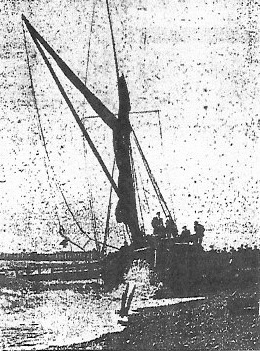
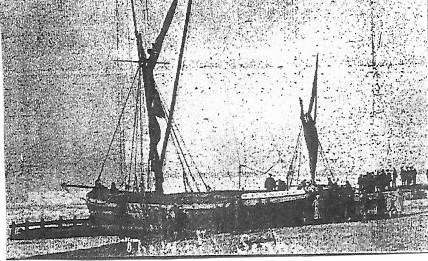
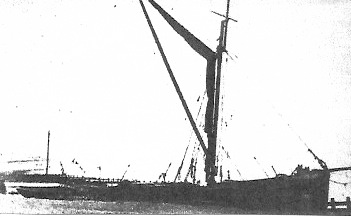
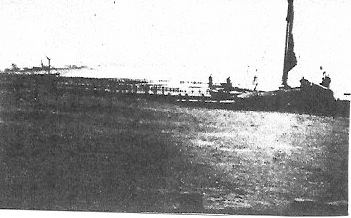
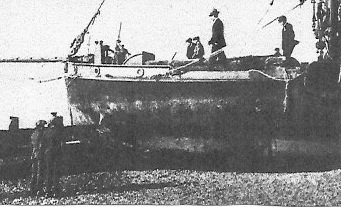

This blog contains articles and posts taken from the Shorehambysea.com Forum.
Lofty writes:
In the early hours of the morning on Saturday 3rd November 1923, two spritsail barges were wrecked near the harbour entrance in stormy conditions.





At 533 tons, length 104 feet and armed with 48 guns HMS Dover was probably the largest vessel built at Shoreham for the Royal Navy. Launched in 1653 she saw action at the Battle of Lowestoft 1665, the Four Days Battle and St. James Day Battle the following year, the Battle of Martinique 1667 and Battle of Solebay 1672. Her duties took her to the Mediterranean, Newfoundland and Ireland and during the 1690’s captured three French ships Lion Eveille, St. Antoine and Marianne as well as a privateer the Beaulieu.
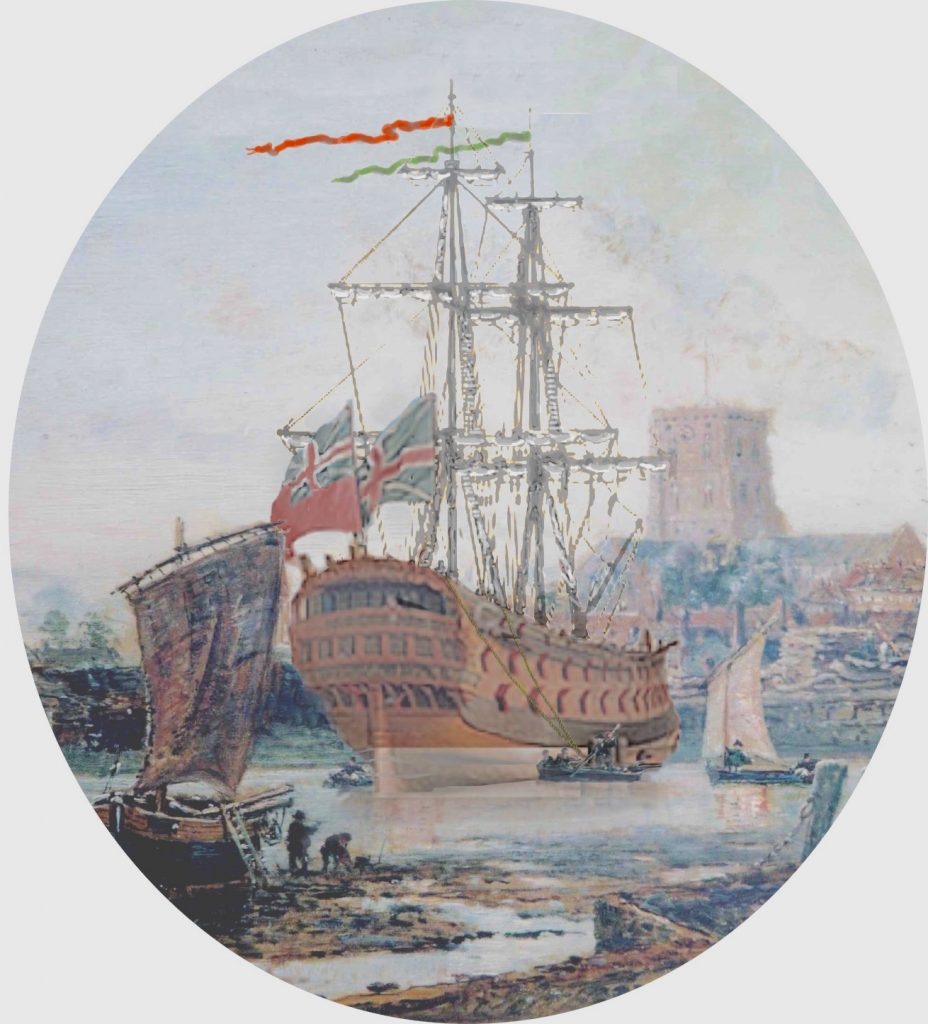
A postcard that shows a fairly usual view west of the beach end of Ferry Road but one that unusually includes the old lifeboat house that stood there next to the coastguard cottages up to the 1920’s. On the extreme right of the card marked by the asterisk more bungalows nearer to the sea are just visible that were built after 1912 and narrows the probable date of the card.
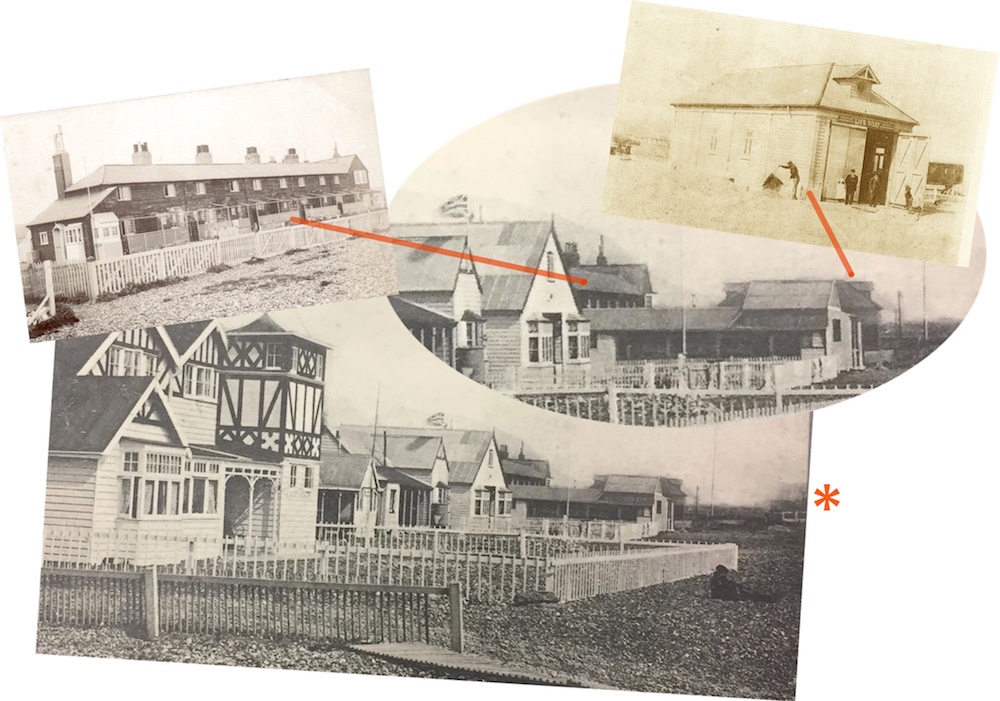
Michael Fox’s recent posts concerning the lifeboat prompted me to search our records and found these images of former coxswains who’s identities have been checked with RNLI at Shoreham. The first is Charles Smart who was involved with the Miown rescue and later a coxswain himself. The second is William Young, coxswain from1929 to 1940, next is J. Austin who we know little of and lastly Fred Laker, coxswain from1920 to 1924.
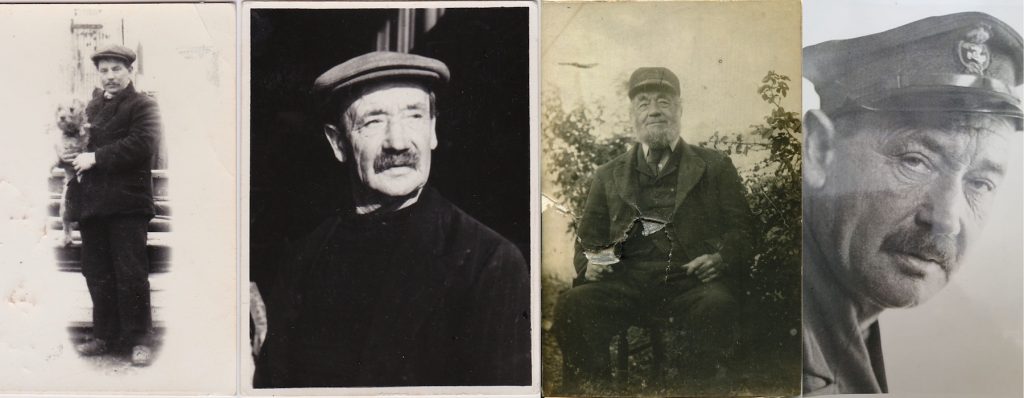
A photo that unusually records both the grounded SS Brussels and the last of the two mystery towers before it was demolished – July 1922
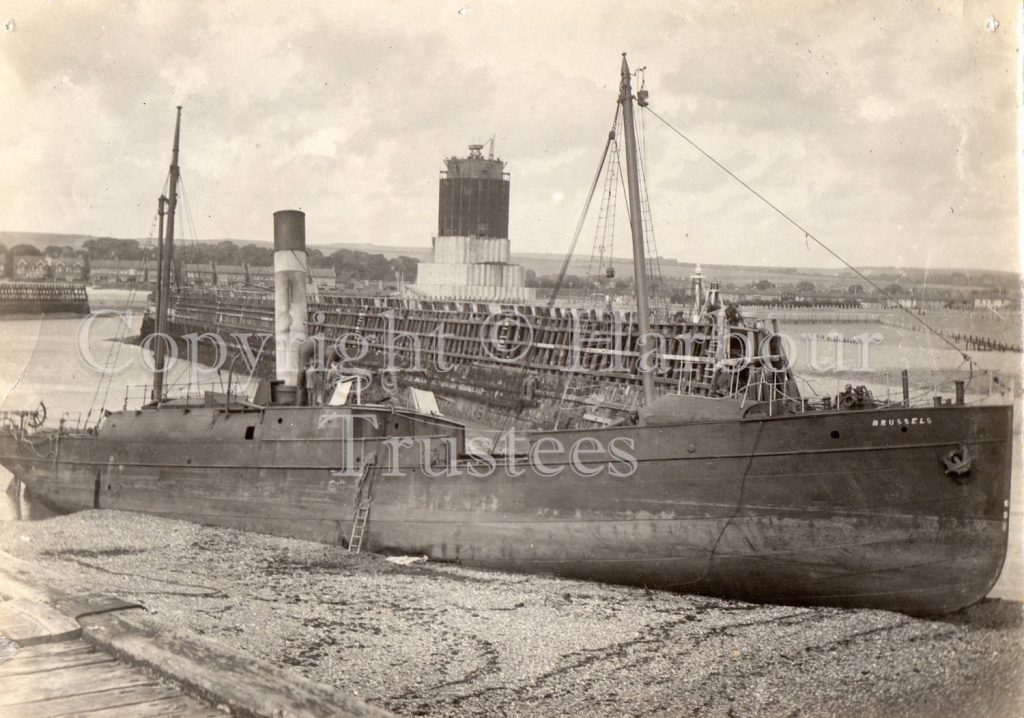
The lifeboat house and lifeboat had been moved to the beach in 1892 after the build up of the bar had prevented the lifeboat from leaving the harbour. They were returned to Kingston after the bar had been cleared and after that photo was taken. Holloways of Shoreham were involved in harbour reclamation work in 1925 which seems likely to have included clearing the bar.
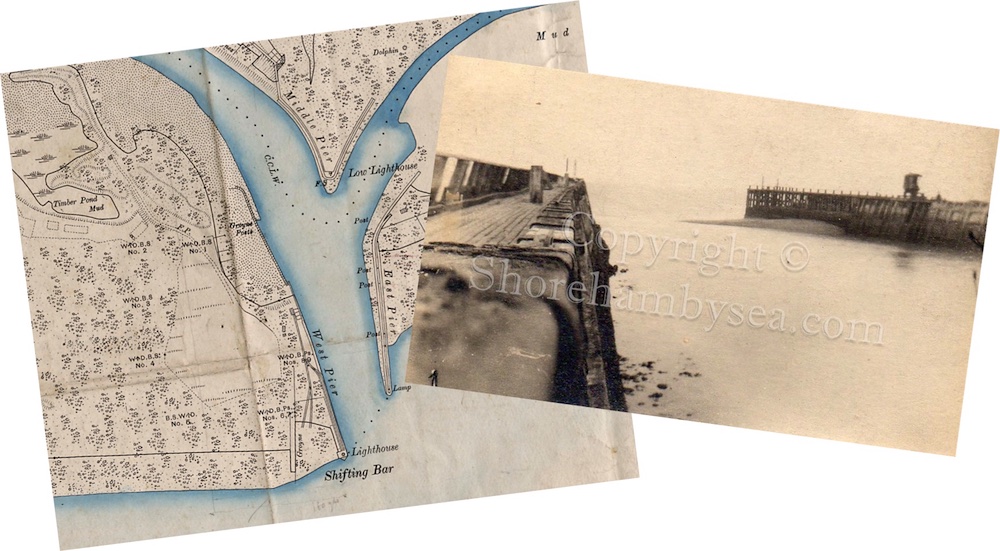
A painting for sale on e-bay. It’s being advertised as 1950’s Shoreham but the engine is clearly older and the year 1894 can just be made out on the reverse of the frame. Comparing the painting with the 1898 OS map the only area that seems to match is if the artist was sitting with the Kingston Lane bridge behind, the signal (SP on the map) south of the railway bank by the access tunnel from Gorringe’s Kingston House and the terrace on the left perhaps Pier Terrace. Any other thoughts?

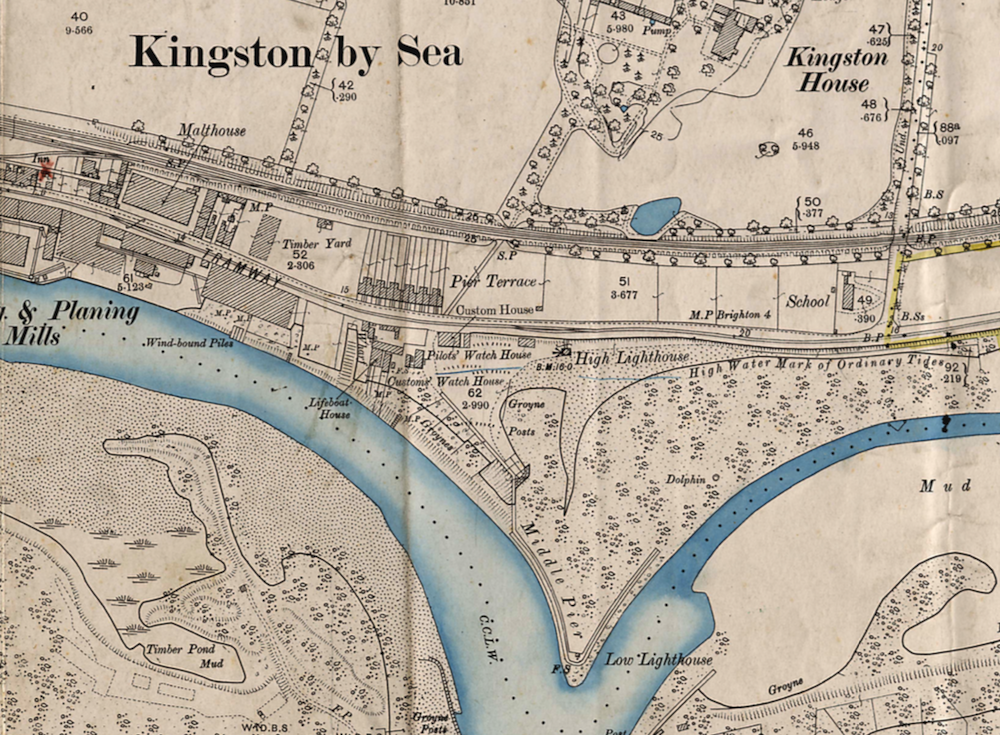
HMS Pheasant was built for the Royal Navy in 1798 by John Edwards at Shoreham. A sloop of 373 tons burthen, 106 ft gundeck, 16 six-pounder guns, 4 twelve pound carronades, two nine-pounders and a compliment of 121 crew. It was an amazing coincidence to discover that a predecessor captured by the French in the Caribbean but released in an exchange of prisoners was conveyed to HMS Spartiate some miles away in the Pheasant. Shortly after he was still with the Spartiate when that vessel took part in the Battle of Trafalgar.
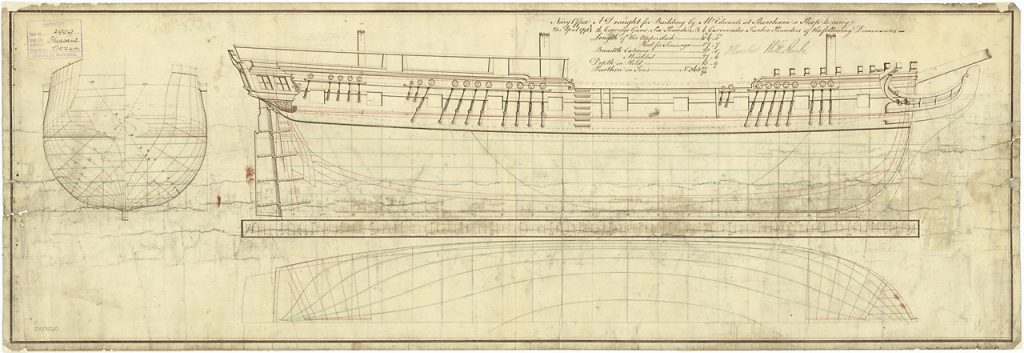
Hadfield’s advert featuring early 1900’s Old Shoreham farmer William Norman and his massive mangolds! In 1910 another Shoreham character that featured in an advert was Myrtle Winton who’s husband Reg Eley ran a motor cycle business in Shoreham. This over-pasted and grubby insertion from the ‘Motor Cycle’ magazine in the Winton family scrap book is nevertheless an interesting relic perhaps.
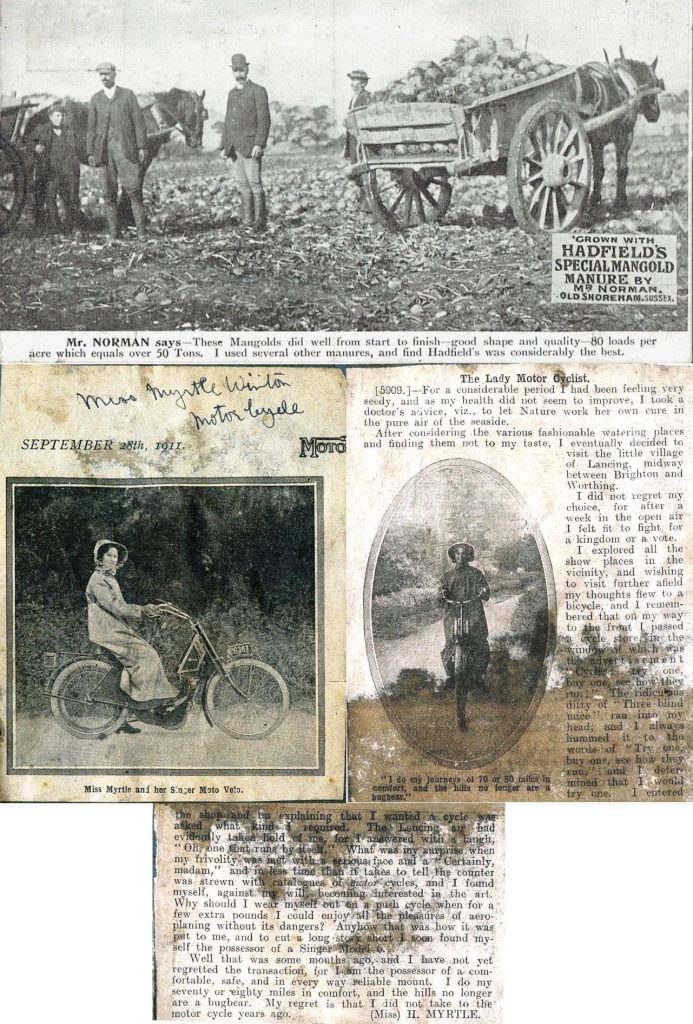
Mr. Clarke lived in Church Street during the 1930’s, he used to help pump the bellows at the Burtenshaw blacksmith family’s forge in Middle Street behind their houses. His father was Head Chef at Lancing College and number 22 across the road was the College Laundry where linen from the college was dropped off by a van each day.
During the last war when the beaches were closed Cuckoo’s Corner became a bathing lido. Something of a surprise perhaps bearing in mind the not inconsiderable number of drownings there during the early 1900’s through to fairly recent years.
One Shoreham doctor would tell mothers (that had children) suffering from muscular fever to strip the patient off and lay them in the river mud at low tide to let the iodine from rotting seaweed effect a cure.
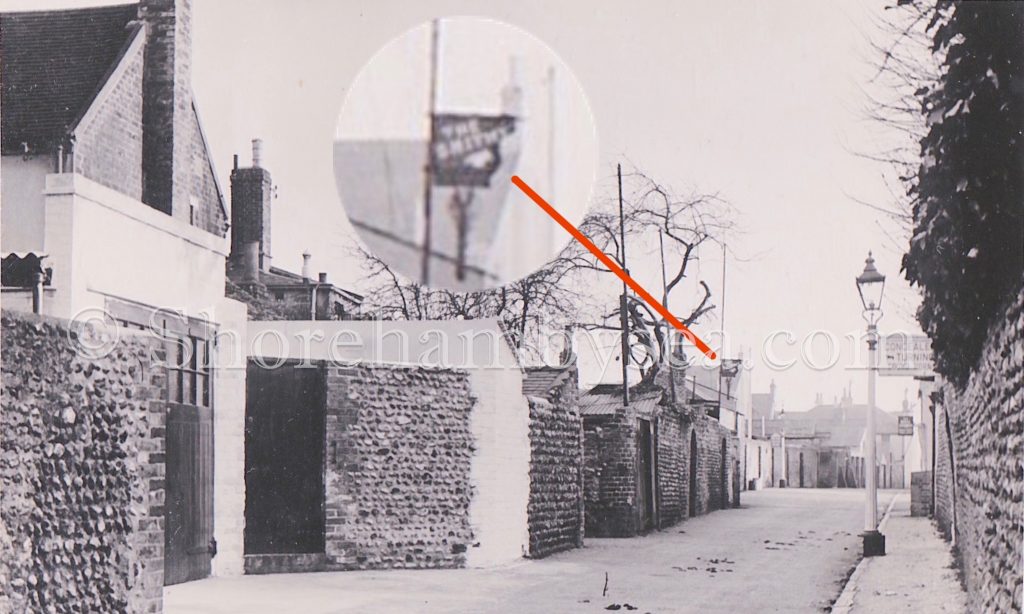
There was a doctor’s surgery on the churchyard (possibly the surgery in East Street) where a Dr. Hall carried out ‘boyhood operations’ on the kitchen table, set broken limbs and made up his own medicines.
Snellings butcher shop is mentioned at the south side of the gap (before it was all demolished) – at Christmas time he would always display a very large whole pig with a lemon in its mouth on a trestle table.
The annual regatta was held on both sides of the footbridge and included in the ‘games’ was the greasy pole, suspended beneath the footbridge which Bill Peters usually won; builder’s races where participants rowed with shovels and fights between the millers and the sweeps using bags of flour and soot as ammunition. At half-tide football was played on the mud and the two fishing families Lakers and Pages would race against each other running and rowing across the river and back.
Even in those days there was still work on boats being carried out (Suters Yard for example) and on a quiet day the sounds of the adze and caulking mallet could be heard as far away as Slonk Hill.